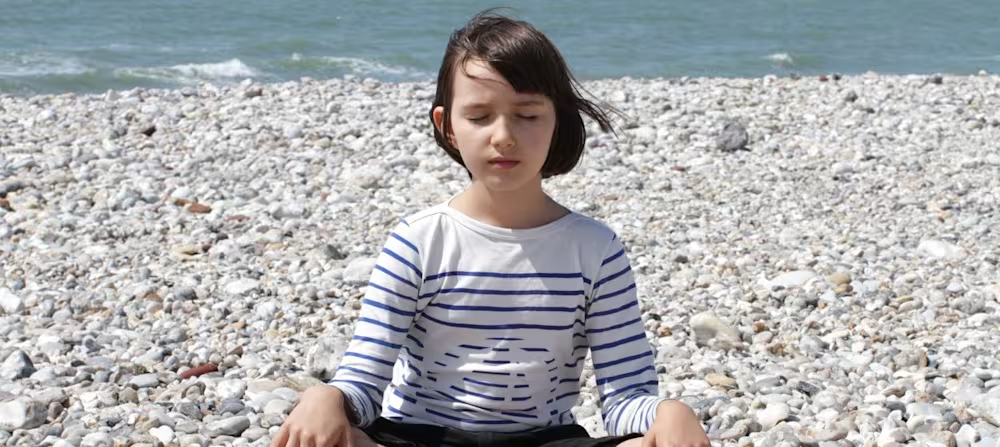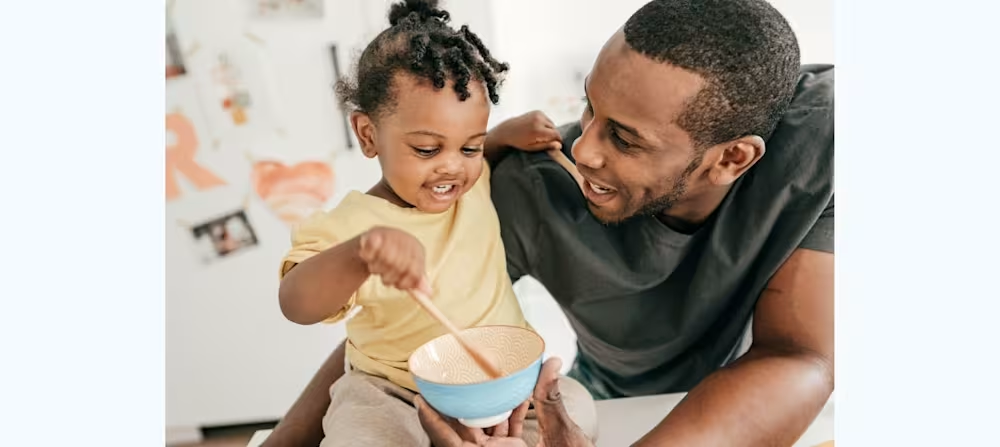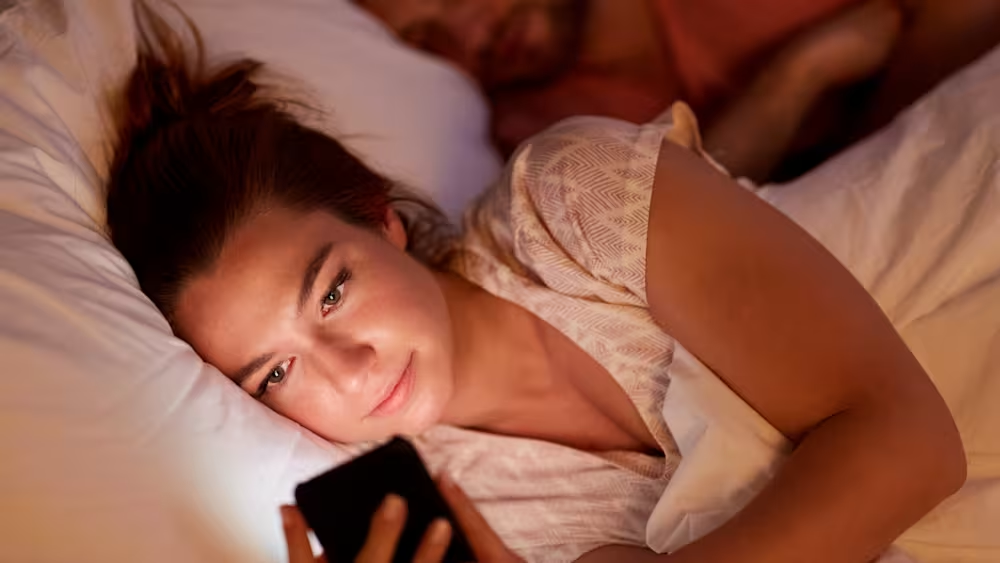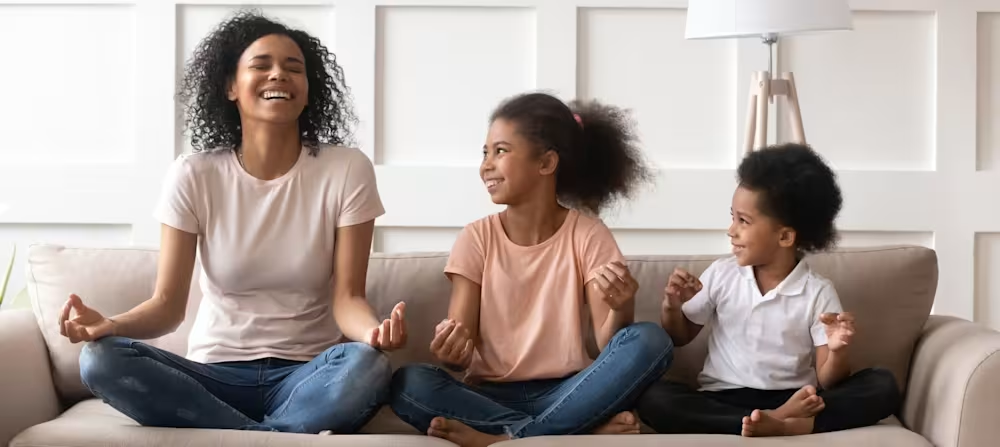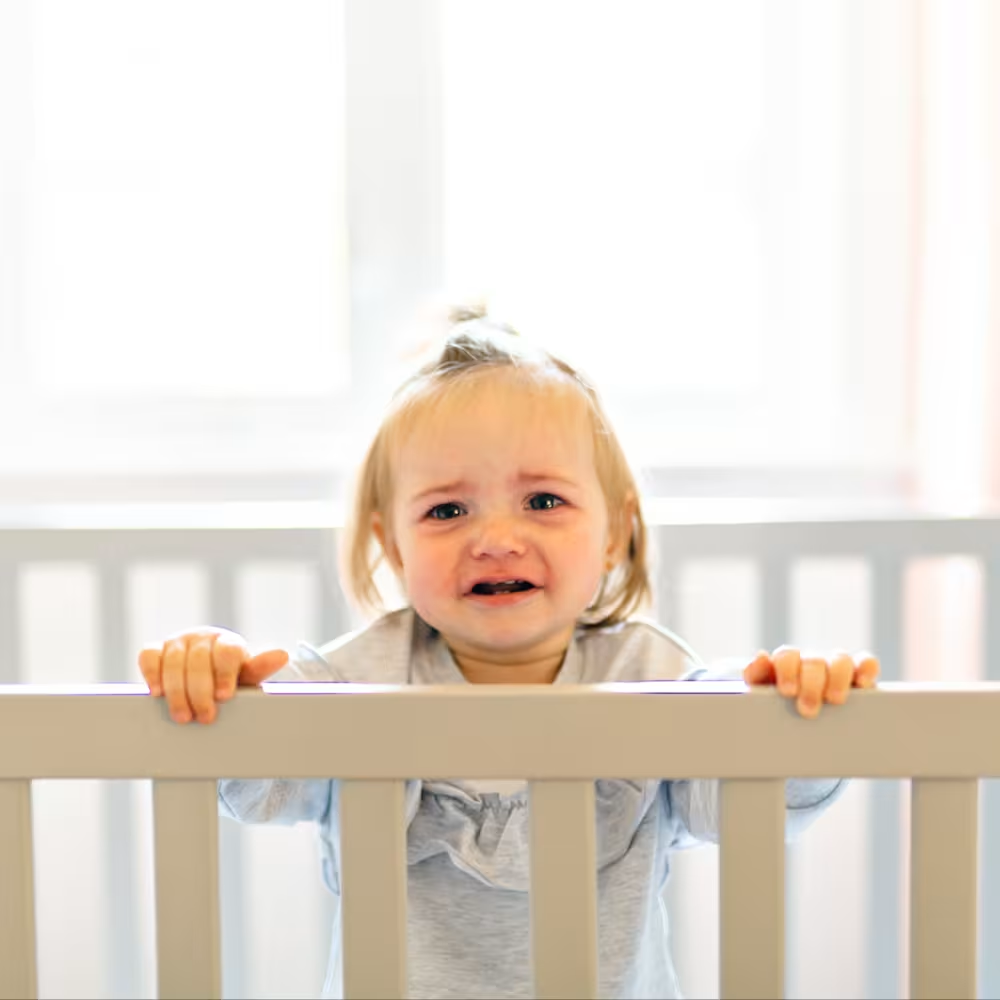Separation anxiety in babies and toddlers
Updated Jan 12, 2026

Separation anxiety is a normal phase of development that all young children go through. Typically speaking, it starts at 9 months and declines around 18 months but may begin earlier and linger longer. We’ll help you recognize the signs, cope with symptoms, and provide tips for handling separation anxiety in both you and your child.
What is separation anxiety?
Separation anxiety is when infants and toddlers become upset when a caregiver leaves — or even goes out of sight. It’s a completely normal stage of development, but that doesn’t make it easy. It’s distressing for the child who suddenly feels unsure or unsafe without their trusted adult, and it’s often just as tough for the parent who can’t walk away without tears (sometimes from both sides!). But as hard as it is, separation anxiety isn’t a sign that something’s wrong. It’s actually a sign that a strong, healthy attachment has formed.
It means they now understand there is an important distinction between you and every other adult in their life and their very survival is dependent upon maintaining a close and ongoing connection to you. This is a good thing. Hard, but good.
Is separation anxiety a disorder?
Separation anxiety in babies and is the result of a normal developmental shift in their understanding of themselves in relation to caregivers. It often occurs around the time a child is and/or walk.
Think about it: Until your baby or toddler could crawl or walk, they typically went wherever you went. So when they finally learn to move away from you on their own, your baby is starting to realize that the two of you aren’t physically connected.
Your baby now understands that they're separate from the person they depend on for care and safety. Such a mind-blowing discovery is, understandably, anxiety-provoking.
Separation anxiety in infancy and toddlerhood is distinctly different than in older children. For children over 6 years old, it may be indicative of Separation Anxiety Disorder [] and require treatment.
When does separation anxiety start in babies?
3 to 7 months
The precursor stage known as stranger anxiety starts as early as 3 months old, but most commonly occurs at 5 months old. This is when babies first start to recognize the difference between their primary caregivers and other adults.
Your baby may exhibit stranger anxiety around close relatives or even the less involved parent but don’t take this as a sign that your baby doesn’t love them. At this stage of development, their preference is simply based on who cares for them most often.
9 to 10 months
Infant separation anxiety usually kicks in after 8 months, when your baby first starts to explore away from you []. This is typically around the time that they're developing a sense of object permanence - the understanding that when an object is out of sight, it continues to exist. They know their parent hasn’t completely vanished and may be in the next room. Crying is how babies express their desire for you to come back.
(If you're curious about what else happens during this month, glimpse into what you might experience with the .)
12 to 18 months
Depending on the child, separation anxiety may increase or decrease as they go from crawling to . However, by this stage, toddlers are beginning to understand that when their parents leave, they always return. Continued practice with coming and going in settings such as daycare can help decrease anxiety and reinforce that temporary separation is just that — temporary. Their increasing language skills also help toddlers cope more effectively with their parents’ absence.
How long does separation anxiety last in babies and toddlers?
How long this phase lasts can vary widely and depends on the individual child. Babies with more cautious or sensitive temperaments may show signs of separation anxiety for longer.. That said, for most babies, the peak of separation anxiety — when their distress is most intense — typically passes within a few weeks.
Toddlers may show less intense but more prolonged separation anxiety, largely due to their growing memory and increased awareness of their surroundings. For example, a toddler might cry at daycare drop-off every morning for a few weeks, but often settles down within minutes — they remember that you'll be back soon. However, a younger baby likely can't make that connection yet, so their distress may last longer and feel more intense in the moment. For those frantically searching "when does separation anxiety end" about their pre-schooler, you're not alone. It’s not uncommon for young children to experience some distress when separating from their parents until around 3 years old []. However, the intensity of symptoms typically decreases beginning around 18 months.
What are the signs of separation anxiety in babies and toddlers?
Separation anxiety signs are usually easy to spot in young children. The main ones include intense crying and clinginess. However, not all children will exhibit these signs.
Other common signs include:
Avoiding a less-preferred caregiver
When this occurs it’s important not to force your child into the arms of someone they're actively trying to avoid. Instead, give them time to gradually warm up to the caregiver on their own whenever possible. You can assign this person a specific caregiving task, such as feeding or dressing so that your child gets used to having someone other than a parent look after these needs.
A lack of exploration
When babies and toddlers are stressed, they lose interest in exploring their environment. Engaging them through interesting objects and interactive play is a great way to regain their attention and lower their stress levels.
Tantrums
While infants tend to show dissatisfaction over parents leaving through tears, toddlers often express anger. This escalation of emotion can be particularly upsetting to parents. However, it’s important to respond to your toddler’s with the same sensitivity you use for their tears. Tantrums are a sign of genuine distress and anxiety, not misbehavior.
5 tips to help your baby with separation anxiety
It's important to remind you this is a normal, unavoidable part of the attachment process. As challenging as it may be for both you and your child, there are several strategies you can proactively use to navigate this temporary phase of development.
Tip | What it means | Why it helps |
|---|---|---|
Ease into new caregivers or settings | Start with short, supported separations and gradually build up time away. | Gives your baby time to build trust and learn that they can cope without you. |
Project calm confidence | Use a relaxed tone, steady movements, and reassuring body language at times of separation. | Babies pick up on your emotions — confidence helps them feel safe. |
Always say goodbye (and be specific) | Let your baby know you’re leaving and when you’ll return in simple terms. | Builds trust and helps your child practice healthy separations. |
Keep goodbyes brief | Offer comfort, say goodbye clearly, then leave without lingering. | Long goodbyes can increase distress rather than ease it. |
Create a consistent goodbye ritual | Use the same words, gestures, or comfort object each time you leave. | Predictability reassures your baby and supports emotional regulation. |
Find more information below:
Tip #1: Gradually introduce your child to the new caregiver/environment
If your child is showing signs of separation anxiety, it can be helpful togradually increase the amount of time your child spends with a new caregiver. For example, you might invite a new babysitter over to hang out with your child while you’re still at home, before eventually stepping out for short periods. This slow introduction helps build trust and teaches your child they can handle being away from you.
It can take a few days to a few weeks for your kiddo to acclimate, depending on your child’s comfort level and temperament. We recognize that a slow transition process isn’t always possible and that’s OK too. What matters most is offering your child reassurance, consistency, and patience as they adjust.
Tip #2: Show confidence in your baby and the caregiver
Anxiety is contagious. If you respond to a challenging situation with your own anxiety, it may intensify your baby's emotions. Instead show confidence in your baby and their caregiver by taking some deep breaths, maintaining a relaxed body and facial expression, and using a positive tone of voice when you drop them off — even if you go shed a few tears in your car a second later.
Tip #3: Always say goodbye and let them know when you’ll be coming back
When your baby is in the throes of detachment anxiety, it can be tempting to sneak away when they're not looking. However, disappearing on your child may inadvertently lead to decreased trust and cause more anxiety in the long run. It also deprives your child of the opportunity to practice saying goodbye, which, over time, helps them become more comfortable with you leaving.
The American Academy of Pediatrics recommends being as specific as your child will understand; for example, let them know that you will be home after bath and before bedtime [].
Tip #4: Don’t linger
While it’s important to make sure you check in with your baby before leaving, avoid dragging out the process as this may prolong their anxiety. Instead, say a few comforting words, give a quick cuddle to calm their body down, then say goodbye.
We know it can be hard — but keeping the goodbye short can help your baby transition more smoothly. Allowing your baby to handle their anxiety without your presence is what helps them build resilience and develop confidence that they will, indeed, be okay without you there.
Tip #5: Create a goodbye ritual
Saying goodbye is important to maintain trust in your relationship with your little one. You can turn your goodbye into a fun and comforting ritual by giving your child an item from home that reminds them of you and by sticking to the same set of words and gestures each time you leave.
If you're heading out to work, you can try adding a goodbye ritual that includes a for “work” — not because they’ll understand the word just yet, but because the consistency helps them feel safe.
For example: Leave baby with a favorite stuffed animal, show the sign for “work,” squeeze them tight, sing “I love you and I’ll be back soon,” and then blow three kisses goodbye. When this is done consistently enough, the goal is for your baby to recognize the routine and feel comforted by the fact that you do this all the time and always come back.
Takeaway
Separation anxiety in babies and toddlers is a normal part of development that marks a shift in their understanding of themselves in relation to caregivers. This often occurs when children are learning how to crawl and/or walk.
Stranger anxiety, the precursor stage to separation anxiety, typically starts as early as 3 months old, but most commonly occurs at 5 months old. Separation anxiety then usually kicks in around 8 months old. It often peaks at 18 months old then can continue into toddlerhood, though often with less intensity.
Signs of separation anxiety can include: intense crying and clinginess, avoiding a less-preferred caregiver, tantrums, , and losing interest in exploring their environment due to stress.
There are a few ways to help your child with separation anxiety. You can try things like slowly introducing new caregivers, showing confidence in your baby and caregiver before you leave, reassuring your little one that you'll be back before you leave, and avoiding a long goodbye process.
Share article:
Note: The content on this site is for informational purposes only and should not replace medical advice from your doctor, pediatrician, or medical professional. If you have questions or concerns, you should contact a medical professional.
5 Sources
Share article:


